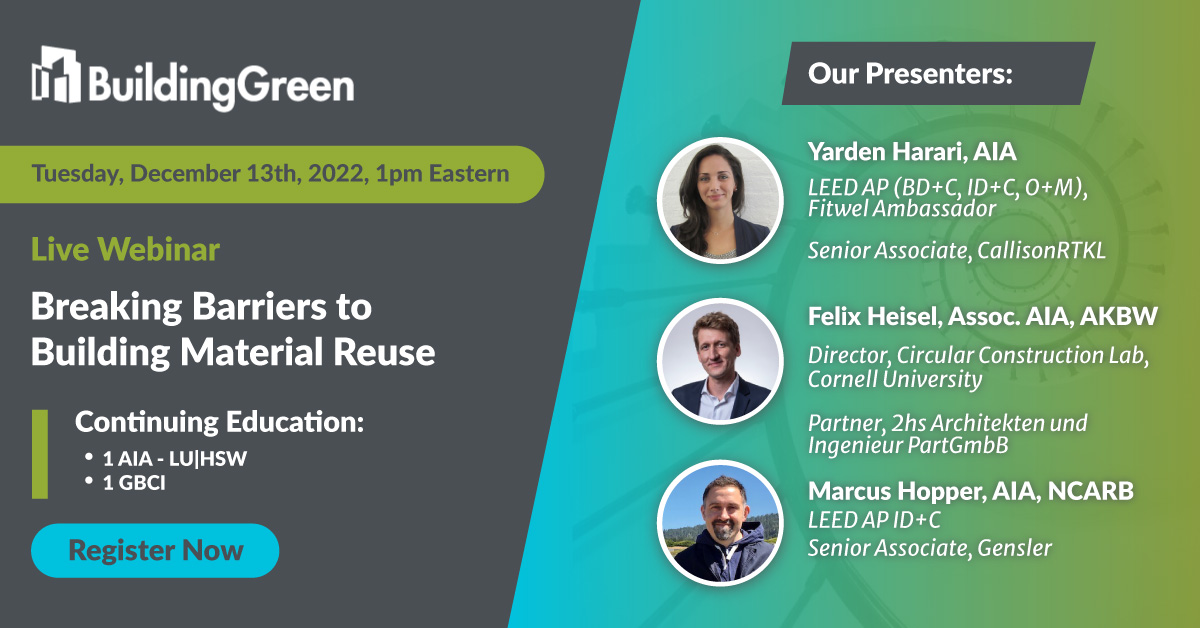Live Webinar
Live Webinar - Breaking Barriers to Building Material Reuse
THIS WEBINAR PURCHASE AND REGISTRATION IS CLOSED.
Buildings aren’t garbage. But you wouldn’t know it by examining the way the AEC industry works.
We typically design buildings for a single, limited purpose. We build them partly out of plastics that can’t be readily recycled. We choose diverse materials with varying lifespans and glue them all together. We sometimes jeopardize the longevity of those materials by paying too little attention to moisture dynamics. When something goes wrong and a building has to come down, we just trash most of it, and much of the rest gets downcycled as aggregate. In the U.S. alone, building demolitions send 145 million tons of rubble to landfills every year.
The building industry isn’t alone. It’s just one part of the larger global economy, which tends to be linear: take, make, waste.
Various global pressures are beginning to change things. But the barriers to reinventing the building industry as a circular economy—one where we design buildings for adaptability and disassembly, construct them out of reused and reusable parts, deconstruct structures instead of demolishing them, and develop markets for the exchange of salvaged materials—are significant. Linearity is baked in to every step of the process.
In this live webinar, join CRTKL’s Yarden Harari, Cornell University’s Felix Heisel, and Gensler’s Marcus Hopper as they talk about their work as “loop-closers.” Through stories and case studies, you’ll learn about:
-
a material reuse roadmap and how it’s streamlining circularity on projects like UPCycle building, a COTE Top Ten award winner in 2020
-
the Circular Construction Lab and what it’s teaching the next generation of architects about deconstruction and material reuse
-
All for Reuse’s ecosystem map and how it’s bringing together a growing network of building professionals committed to reusing commercial building materials
Learning objectives
Understand the difference between linear and circular economy, and articulate which aspects of the building industry need to change to improve environmental performance.
Explain how a linear economy contributes to environmental and social crises, including climate change and global inequality.
Identify barriers to building material reuse (such as design conventions, construction timelines, storage issues, and policy shortcomings), and find solutions to these problems to improve environmental outcomes.
Locate sources of reused materials and contribute to salvaged material exchange networks.




